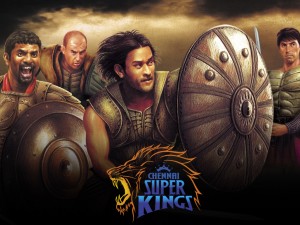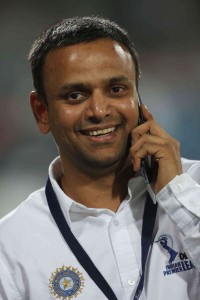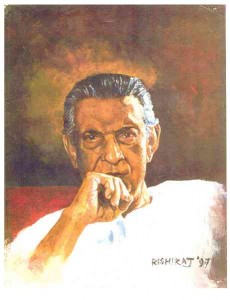It is ironical isn’t it, that in our childhoods, the one thing we most hate (discount the thrashing from parents) is going to school, it is a pain, burden, torture somewhat akin to slavery to a despotic teachers who are bent on making another brick in the wall. Imagine, getting up even before the sun lights up the stratosphere, having a bath (skipping it, if none around), getting dressed, burdened by a sack full of text-books, notebooks and a calendar, leaving home as the rather sad tune of Vande Mataram is heard on a neighbours radio set, trudging to the bus stop hoping and praying that the bus doesn’t arrive (tyre puncture, accident, or anything else), dragging inside it when it arrives, smiling at the teachers that get in the bus hoping that they will be a wee-bit more lenient but alas! Morose prayers, deep breathing to classical music and then the real torture starts: Class-teacher taking attendance, followed by stock taking on homework, punishment, remark on the calendar, a rap on the knuckles, kneeling outside the class, etc. etc. The torture only stemmed for some 15 minutes, when the school broke for recess, in which one has to first rush to the canteen when one hears the bell, grab a bite by standing in a long queue, eat and enjoy, sip at water from a few faucets outside the loos on every floor, empty the bladder and rush back to class by the second ring of the bell indicating the culmination of recess and resumption of persecution.
When they are not trying to cram our brains with information and knowledge which is of little value in real world (for instance, I have never had the use of the most famous algebraic equation (a+b)² = a² + b² + 2ab, ever in my life except for those gloomy days in school), they would drag us to the open ground and force us to move our body in rather rectangular fashion at the count of numbers, namely, 1,2,3,4…5,6,7,8 and then for some very inane reason the count will continue backward and we are expected to it match it by doing the reverse of what we were earlier doing. The only saving grace was that last bell at around 1 pm that resulted in a near stampede as everyone wants to rush out of the school with immediacy. Anyone still in doubt over how children feel about school should look at their demeanour when they enter the school, sad, downcast and glum and contrast it with the way they exit the school, boisterous, raucous and happy.
And yet, as the years pass by and grey abounds on our scalp, we recall those ‘tortuous’ days with fond remembrance. School days weren’t bad after all; in fact, they were one of the best times in our lives. The wiles of the world had not yet defiled our minds and the one and only motive we had was to escape studies and have fun, doing precious nothing, playing war with small figurines, deliberately trying to find a puzzle and solve it, hanging out of tree branches, climbing walls only to jump off them, sneaking into gardens and stealing mangoes or black berries, letting air out of tyres with a thin stick and enjoying the sound that it makes. Oh yes! School was fun, only because we were children and at that time anything and everything was fun.
I too have fond much remembrance of my school, Utpal Shanghvi School or USS. Located in Juhu, right next to Amitabh Bachchan’s bungalow and near Chandan Talkies, USS started in early 80’s. It mainly catered to rich Gujju kids in the vicinity who did not get admission in Jamnabai or Maneckji. Within a few years of coming into being, USS established itself as a premier choice school, in fact, at around the time I left, the donation required for admission was rumoured to have crossed Rs. 1 lakh, which was a big big amount in those days.
Nonetheless, I was lucky to have got admission in USS thanks to my dad’s acquaintance with the Principal Abha Dharampal’s husband. Prior to USS, I was studying at a rather cosy school in Santacruz (W), named as Little Angels High School. Since, my sister who too was with me at Little Angels and had got admission in Mount Marys Convent in Bandra, my parents decided to shift me to a bigger school, so that I don’t suffer from a complex with my sister (and these were the days before psychiatrist and psychologist existed). Thus, in the month of August, I was sitting in princi’s (hereafter I will refer to Ms. Dharampal as princi as I still don’t have the courage to refer to her by name) office and after a short and snappy interview I was in. It was year 1987.
The reason why I am suddenly indulging in nostalgia is because some days back my mother shared with me a box that I used to maintain as a kid, in which to my great excitement I found yearly class pictures from USS. Looking at those pictures, schooldays memories just kept gushing on like swooning Brahmaputra. I tried to assign names to all those in the photos and to my surprise, I remembered quite a few of them. Since, I was an introvert and somewhat scared of girls, I don’t remember quite many of their names. Fortunately and quite fortuitously, I was present during all these classroom snaps. Looking at all those kids smiling, bored, yawning, posing, stiff, relaxed, etc, I could not help but wonder where all they must be. Probably, married and well-settled like me. Somehow, except for a very few friends, I haven’t been in touch with any of them and even with the ones I did, it was very infrequent. Quite a few years back, I remember going to a reunion at USS and had met a few of them, somehow it did not work out and haven’t been in touch with any of them.
Thus, when my dad got the pics scanned, I decided immediately to put them on a blog as an advert for all my classmates from USS class 1987-1992, to get in touch and get together and share and extend each other memories. Here below I am posting the photos on a yearly basis with a few incidents culled from the neurons that are still storing the memories. It’s better to list them down before they fail or fade or both. Continue reading






 long line of innovations that the league has pioneered from the start. We did a calculation last year and 100 per cent matches went over an hour beyond their schedule time. It was just one delayed game after another and this inspite of the fact that we had enforced extremely high penalties. What we discovered then was that a majority of the time teams were ready to pay the money because the coaches and captains/players were consulting one another as the playing situations evolved on-field to fine tune their strategies. It is because of this discovery that we attempted to innovate with this new ‘strategy break’ at the end of 10 overs.
long line of innovations that the league has pioneered from the start. We did a calculation last year and 100 per cent matches went over an hour beyond their schedule time. It was just one delayed game after another and this inspite of the fact that we had enforced extremely high penalties. What we discovered then was that a majority of the time teams were ready to pay the money because the coaches and captains/players were consulting one another as the playing situations evolved on-field to fine tune their strategies. It is because of this discovery that we attempted to innovate with this new ‘strategy break’ at the end of 10 overs. e vestiges of that numbness. But it is wearing off quite steadily, especially when Tutul simply refuses to do as I wish and seem to merely wish as he does.
e vestiges of that numbness. But it is wearing off quite steadily, especially when Tutul simply refuses to do as I wish and seem to merely wish as he does.
 er’s repertoire, starting with Pather Panchali and if possible going on till Agantuk. Probably all his contemporaries and admirers like Renoir, Bergman, Bunuel, Fellini, Kurosawa must have arrived from their respective heavens, revisiting his masterpieces, discussing, dissecting and deliberating on them. Meanwhile, the birthday boy himself, would be sitting in a corner, away from the glare, dressed up in white dhoti-kurta and a shawl draped over his torso. Sitting cross-legged, a pipe hanging from his mouth sending out small small tufts of tobacco clouds quite like the steam engine in Pather Panchali that amused Apu and Durga. Satyajit Ray or Manikda as he was known within the film fraternity, must be observing all and sundry with intent full eyes, and probably thinking of what more embellishments could have been made to these movies or how many more he could have made, only if he had seen Bicycle Thieves a little earlier or the finances had flown in evenly through the years. Or just probably, he might be seeing those movies now not as a maker but as a viewer and enjoying them as thoroughly as we all do.
er’s repertoire, starting with Pather Panchali and if possible going on till Agantuk. Probably all his contemporaries and admirers like Renoir, Bergman, Bunuel, Fellini, Kurosawa must have arrived from their respective heavens, revisiting his masterpieces, discussing, dissecting and deliberating on them. Meanwhile, the birthday boy himself, would be sitting in a corner, away from the glare, dressed up in white dhoti-kurta and a shawl draped over his torso. Sitting cross-legged, a pipe hanging from his mouth sending out small small tufts of tobacco clouds quite like the steam engine in Pather Panchali that amused Apu and Durga. Satyajit Ray or Manikda as he was known within the film fraternity, must be observing all and sundry with intent full eyes, and probably thinking of what more embellishments could have been made to these movies or how many more he could have made, only if he had seen Bicycle Thieves a little earlier or the finances had flown in evenly through the years. Or just probably, he might be seeing those movies now not as a maker but as a viewer and enjoying them as thoroughly as we all do.